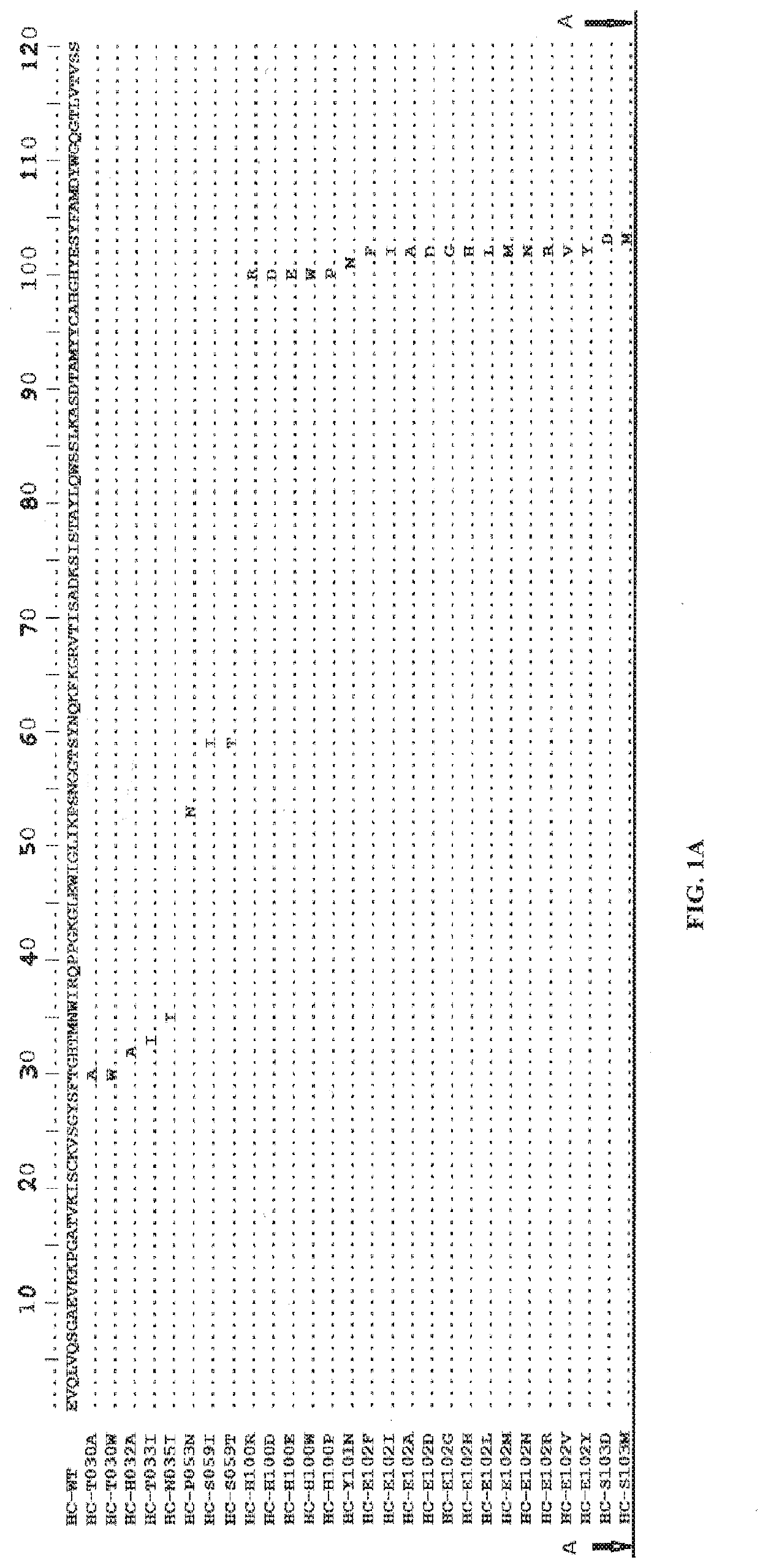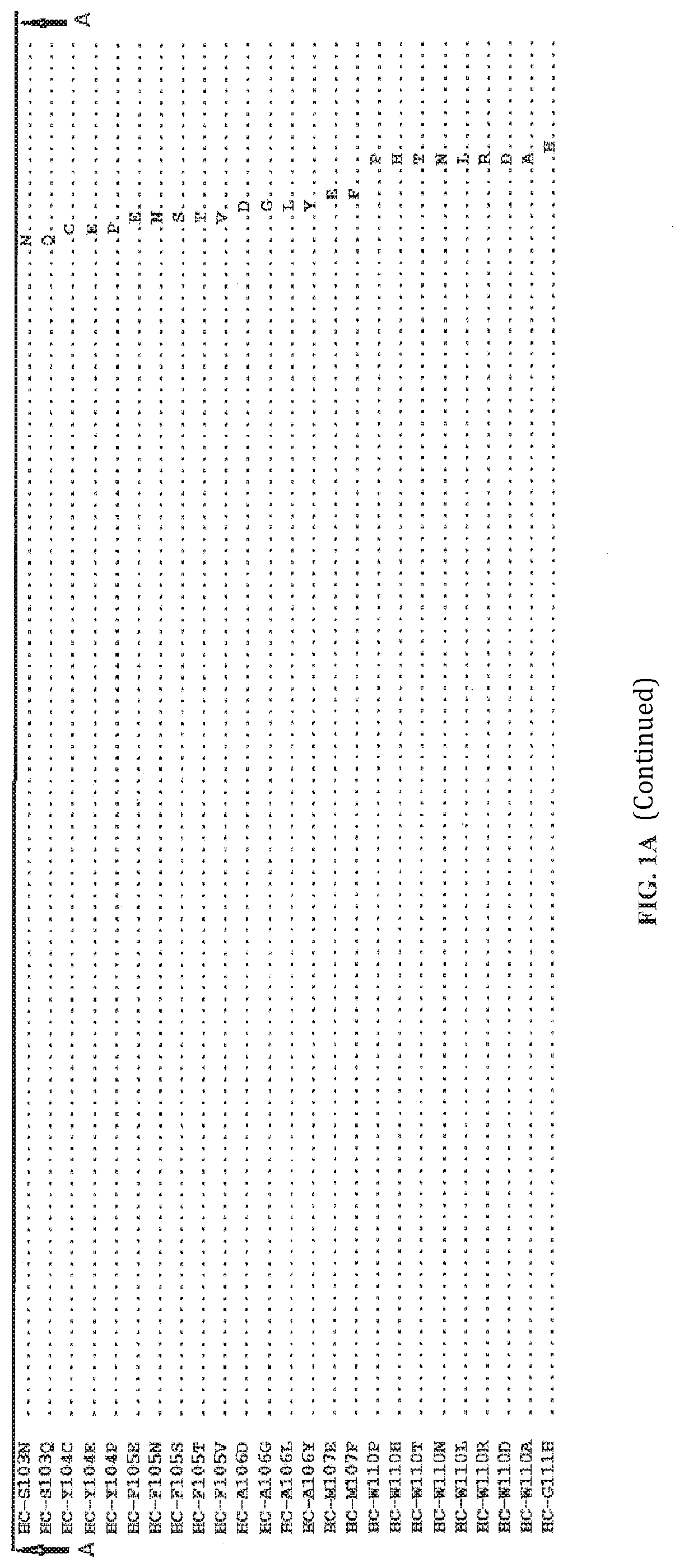Anti-Axl antibodies, antibody fragments and their immunoconjugates and uses thereof
a technology of antibody fragments and anti-axl antibodies, which is applied in the field of anti-axl antibodies, antibody fragments and their immunoconjugates, and can solve problems such as significant side effects
- Summary
- Abstract
- Description
- Claims
- Application Information
AI Technical Summary
Benefits of technology
Problems solved by technology
Method used
Image
Examples
example 1
ally Active Antibody to Axl
[0446]Axl is a transmembrane tyrosine kinase with an extracellular domain accessible by the conditionally active antibody. This cell surface protein is highly expressed in thyroid carcinoma tissues, and overexpressed in many other cancers such as myeloproliferative disorders, prostatic carcinoma cells, or breast cancer. A conditionally active antibody to the extracellular domain of the Axl protein was developed herein.
[0447]A wild-type antibody to Axl was selected as the template antibody (with a heavy chain variable region of 063-hum10F10-HC in FIG. 1A and a light chain variable region of 063-hum10F10-HC in FIG. 1B). The DNA encoding the wild-type antibody was evolved to generate a mutant antibody library using Comprehensive Positional Evolution (CPE), a method by which each position in the template antibody is randomized one at a time. Each mutant antibody in the library has only one single point mutation. The mutant antibodies in the library were genera...
example 2
ent Binding Affinity of the Anti-Axl Antibodies
[0458]Some of the anti-Axl antibodies of the present invention were tested in buffers at different pH levels. One type of buffer was a KREBS buffer with 1% bovine serum albumin (BSA) present. The KREBS buffer was titrated to have a pH in the range of 5-7.4. The binding affinity of the antibodies with Axl was measured using an ELISA assay (OD450) and the results are presented in FIG. 7. The two control antibodies (BAP063-3831 and BAP063-3818) were not conditionally active as they have a binding affinity that was not significantly affected by the change in pHs. On the other hand, the anti-Axl antibodies of the present invention are conditionally active since their binding affinity with Axl was dependent on the pH (FIG. 7).
example 3
ing by the Anti-Axl Antibodies
[0459]The cell killing activities of the anti-Axl antibodies of the present invention were tested using A549 cells. The results are shown in FIGS. 8A-8E. The cell killing activities were measured at two pH levels: 6.0 and 7.4, representing a pH in tumor microenvironment and a normal physiological pH, respectively. The percentage of cell killing at various antibody concentrations is shown in FIGS. 8A-8E.
[0460]The two tests gave consistent cell killing results. The negative control (anti-Axl humanized WT) showed a similar cell killing activity at pH 6.0 and pH 7.4 for the A549 cells (FIG. 8A). In contrast, the anti-Axl antibodies of the present invention showed significantly higher cell killing activity at pH 6.0 in comparison with cell killing activity at pH 7.4, especially at low antibody concentrations at which the antibodies did not saturate the A549 cells (FIGS. 8B-8E).
PUM
| Property | Measurement | Unit |
|---|---|---|
| dissociation constant | aaaaa | aaaaa |
| pH | aaaaa | aaaaa |
| pH | aaaaa | aaaaa |
Abstract
Description
Claims
Application Information
 Login to View More
Login to View More - R&D
- Intellectual Property
- Life Sciences
- Materials
- Tech Scout
- Unparalleled Data Quality
- Higher Quality Content
- 60% Fewer Hallucinations
Browse by: Latest US Patents, China's latest patents, Technical Efficacy Thesaurus, Application Domain, Technology Topic, Popular Technical Reports.
© 2025 PatSnap. All rights reserved.Legal|Privacy policy|Modern Slavery Act Transparency Statement|Sitemap|About US| Contact US: help@patsnap.com



